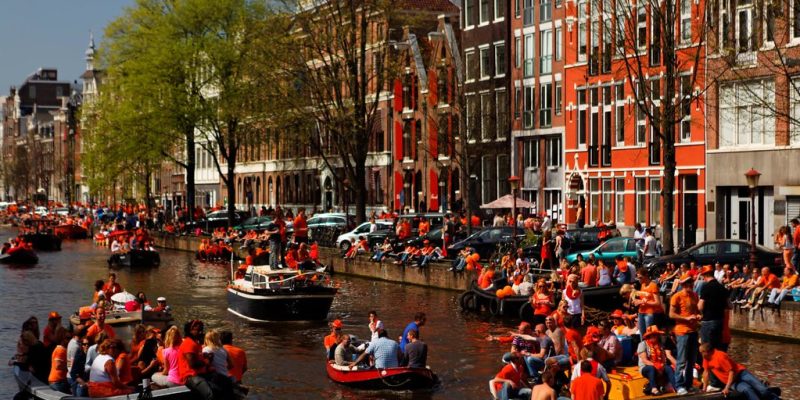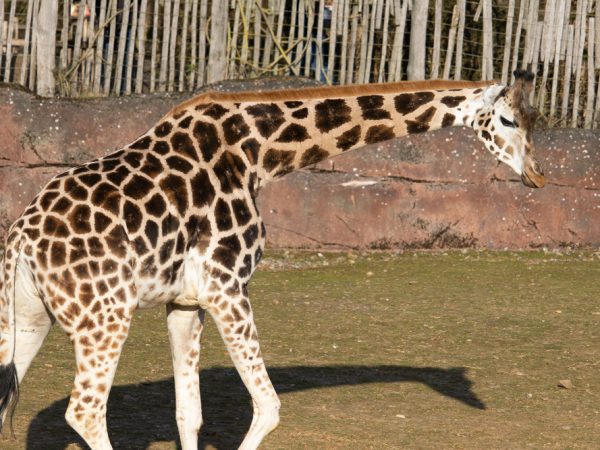Dutch Queens Day Unveiled: 10 Must-See Parades and Events

Dutch Queens Day, known in the Netherlands as Koninginnedag, was a beloved national holiday that celebrated the birthday of the Queen. Though the name was changed to King’s Day (Koningsdag) after Queen Beatrix’s abdication in 2013, the spirit of the festivities remains unchanged. Today, we look back at the essence of Dutch Queens Day and the remarkable events that made it such an unforgettable celebration. From bustling street markets to grand parades, Dutch Queens Day was a lively spectacle filled with fun and excitement. Here are 10 must-see parades and events that defined the magic of this historical day.
Dutch Queens Day Amsterdam Canal Parade
The canal parade in Amsterdam was an iconic spectacle that saw the city’s waterways come alive with color and celebration. Boats adorned with orange flags and festive decorations sailed down the canals, while participants and spectators alike donned their best costumes, often incorporating traditional Dutch themes. The parade featured live music, dancing, and an overall atmosphere of jubilation that captured the essence of the festivities. The sight of boats drifting along the scenic canals, with reflections of colorful lights on the water, created a magical ambiance that drew large crowds every year.
Dutch Queens Day Vondelpark Children’s Market
Vondelpark transformed into a playground for young entrepreneurs, where children set up stalls to sell a variety of items, from second-hand toys and clothes to homemade crafts and baked goods. This marketplace was a cherished tradition where kids showcased their creativity and learned valuable lessons about commerce. In addition to selling goods, children often performed music, dance routines, and magic tricks for onlookers, turning the park into a lively center of entertainment. The young vendors were not just participants but an integral part of the holiday, infusing it with youthful energy and creativity.
Dutch Queens Day Utrecht Midnight Festivities
Utrecht was famous for starting the celebrations early, with the party kicking off the night before. Known locally as “Queens Night,” this pre-holiday celebration filled the city’s streets with music, dance, and festivities that lasted well into the night. Temporary stages popped up in squares and parks, where local artists and DJs performed, creating a vibrant atmosphere that set the tone for the following day’s celebrations. It became a tradition for people to gather and enjoy live music, drinks, and the company of friends, giving the holiday a lively start.
Dutch Queens Day Street Performers in The Hague
The Hague embraced the spirit of the holiday by transforming its streets into a stage for all kinds of performers. From acrobats and magicians to mime artists and musicians, the city was filled with diverse acts that entertained both young and old. The spontaneity and variety of performances meant that one could stumble upon an unexpected show at any corner, adding an element of surprise and delight to the experience. The performances were not confined to any one area, ensuring that the entire city felt like a festive stage.
Dutch Queens Day Flea Market at Apeldoorn
Apeldoorn hosted one of the largest flea markets, attracting bargain hunters and collectors from all over the country. The market sprawled across the city, with countless stalls offering vintage finds, antiques, books, and unique knick-knacks. Visitors could spend hours browsing the various treasures on display while enjoying traditional Dutch snacks from nearby food vendors. The flea market was more than just a place to shop; it was a social event where families and friends gathered to celebrate the occasion and indulge in the festive atmosphere.
Dutch Queens Day Historical Parade in Haarlem
The historical parade in Haarlem was a special tribute to the country’s rich heritage. Participants dressed in period costumes from various eras, showcasing significant moments in history through reenactments and themed floats. The parade also included traditional music played by marching bands and performances depicting the lives of famous Dutch figures. It was not only an entertaining spectacle but also an educational experience that highlighted the country’s cultural evolution over the centuries, making it a popular event for history enthusiasts and families alike.
Dutch Queens Day Park Festival in Rotterdam
Rotterdam was known for its park festivals, which brought together live music, food vendors, and outdoor activities in large open spaces. The festivities attracted crowds of all ages, offering something for everyone—from energetic dance areas to relaxed picnic spots. Several stages were set up for musical performances, ranging from Dutch folk music to modern pop, ensuring there was a variety of entertainment throughout the day. The city’s multicultural atmosphere shone through in the diversity of performances and culinary offerings, making the event a true reflection of the local community.
Dutch Queens Day Royal Pageant in Maastricht
The Royal Pageant in Maastricht added a regal touch to the celebration. Featuring horse-drawn carriages, marching bands, and people dressed in royal attire, the procession honored the country’s long-standing connection to the monarchy. The pageant was set against the backdrop of the city’s historic architecture, which added to its grandeur and appeal. This event attracted those who appreciated traditional celebrations and the royal family’s role in national history, offering a blend of elegance and festivity that was unique to the city.
Dutch Queens Day Dance Festival in Leiden
Leiden’s celebration was characterized by its lively dance festival, which drew young people from all over the country. The event featured well-known DJs and music artists who performed electronic dance music, turning the city’s squares and streets into open-air dance floors. The youthful atmosphere and upbeat music made it a favorite spot for those looking to experience the holiday in a more modern and energetic way. The dance festival also included smaller stages showcasing various music genres, catering to different tastes and attracting a diverse crowd.
Dutch Queens Day Royal Tribute in Delft
Delft’s tribute to the royal family was a significant part of the holiday’s events, as the city has strong historical ties to the Dutch monarchy. A formal ceremony was held to honor the contributions of the royal family, particularly members of the House of Orange-Nassau. The tribute included musical performances, speeches, and a wreath-laying ceremony at monuments dedicated to the royal family. The event provided a moment of reflection amidst the festivities, highlighting the deep connection between the people and their royal heritage.
Conclusion
Dutch Queens Day was a day of unity, tradition, and joyous celebration that brought together people from all walks of life. The parades and events held across various cities showcased the vibrant culture, history, and spirit of the Dutch people. From the lively canal parades of Amsterdam to the royal tributes in Delft, the festivities offered something for everyone, making it a cherished occasion for many. Though the day is now known as King’s Day, the memories of Dutch Queens Day continue to live on, reminding the world of the Netherlands’ rich cultural heritage and the country’s enduring love for its royal family.
FAQs
Q1. What was the main focus of the holiday?
The holiday primarily celebrated the Queen’s birthday, featuring parades, street markets, and public festivities to honor the monarchy.
Q2. Why did the holiday change to King’s Day?
It was renamed King’s Day following the ascension of King Willem-Alexander in 2013. The date was moved to April 27th to align with the King’s birthday.
Q3. What are some popular traditions associated with the celebration?
Popular traditions included free markets (vrijmarkt), parades, street performances, and events where everyone wore orange to symbolize national pride.
Q4. How did celebrations differ across various cities?
Different cities had unique events that reflected local culture. For example, Amsterdam was known for its canal parades, while Haarlem featured historical reenactments.
Q5. What significance does the color orange hold in these celebrations?
The color orange represents the royal family, known as the House of Orange-Nassau, and is a symbol of unity and pride during the festivities.
Also read: Plugboxlinux Tech: 10 Essential Tips for Maximising Your Linux Experience











